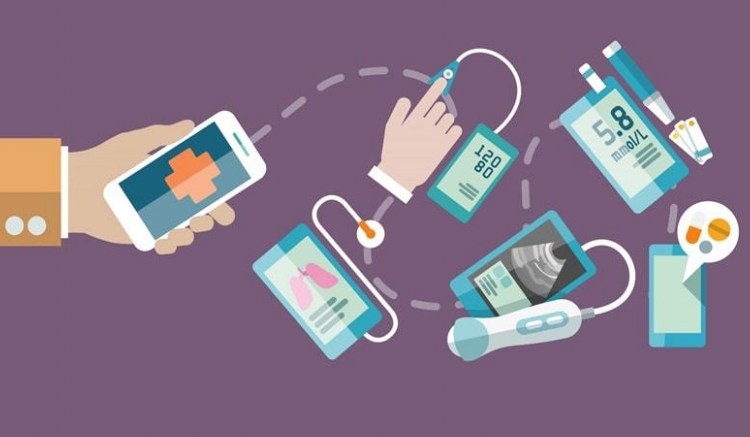Sign Up for Our
Updates
Technology and intelligent automation certainly haven’t been absent from the health sector. However, legacy systems present a significant barrier to the adoption of automation in healthcare. Then there is the very real issue of reluctance – among healthcare workers and patients – to transition to new forms of digital technology.
A survey conducted by Accenture in 2022 found that 53% of people in the UK are uncomfortable with the idea of receiving diagnosis or treatment via digital technology or AI. A general lack of trust was uncovered around health data, with 77% of respondents claiming that they would not trust a pharma company to keep their data secure. This ongoing sense of hesitancy and distrust is understandable. Ask the average person what they know about AI-driven technology, and many will reference the Cambridge Analytica data-harvesting scandal or perhaps recent news that Tesla’s Autopilot has been linked to 273 crashes and five fatalities.
The problem is that when automation works smoothly and effectively, it’s generally not considered newsworthy. This makes it crucial for us to report on the benefits being gained from proactive automation, not just the spectacular disasters. Nowhere is this more important than in healthcare, where patient welfare is on the line. To that end, let’s take a look at three of the most interesting fronts on which proactive automation is being developed in healthcare.
Chatbots and smart virtual assistants in healthcare
Chatbots and smart virtual assistants provide an easy-to-adopt yet powerful foundation for proactive healthcare. Virtual assistants like Alphabot allow clinicians to access the systems and apps they need via one user-friendly interface, thus saving time and reducing the chances of missing something crucial. With automated reminders and updates, healthcare workers are better able to manage their days, freeing up crucial time for proactive care.
When effectively deployed and managed, chatbots can be a powerful tool for improving the patient experience. Healthcare chatbots allow people to book and change appointments, request information, and have questions answered without having to make a phone call. Chatbots can also be used to collect post-care data, which is central to developing a tailored approach to the delivery of ongoing care.
Remote Patient Monitoring (RPM)
When a patient goes home, they often take on much (if not all) of the responsibility of remembering and carrying out their ongoing care tasks. Healthcare workers simply don’t have the bandwidth to follow up on every task with every patient. However, this level of proactive outreach is very much within the ambit of automation.
Through Remote Patient Monitoring (RPM), patients are able to share data with their healthcare team via apps or other forms of communication technology. Providers can likewise respond to patient needs, and crucially, they’re able to do so outside of the traditional, in-office setting. RPM sensors and AI tools are able to automate much of the process of information sharing, thus minimizing the pressure on healthcare workers while creating easy prompts and reminders for patients.
Automated RPM tools are proving particularly beneficial for patients who require daily adherence to strict schedules of medication, physical therapy, and nutrition plans. Those with chronic obstructive pulmonary disease (COPD) and chronic heart failure (CHF), for example, have been shown to benefit from RPM automation designed to detect signs of deterioration. The technology was able to deliver tailored strategies to help patients improve their condition and adhere to their care protocols going forward. This application of RPM reduced emergency room visits among the study population – clearly a positive outcome for both patients and their care teams.
Of course, not all RPM solutions work so smoothly. Indeed, RPM can be ineffective or even counterproductive on key metrics among certain patient populations. For example, a 2018 study published in Nature’s npj Digital Medicine journal found automated text messages to be far less effective than tailored coaching. Here, it’s crucial to note that even the most sophisticated RPM automation may negatively impact a patient’s sense of satisfaction with the care received.
Understanding patient satisfaction through machine learning
Patient satisfaction is strongly correlated with their willingness to follow post-treatment instructions and return for ongoing and preventative care. This makes it a crucial factor in the evolution of proactive automation. Thus far, machine learning is standing out as our most effective tool for understanding patient sentiments and driving the development of effective automation in healthcare.
In 2021, the Journal of Biomedical and Health Informatics published a machine learning study conducted by Geisinger and Penn State University. The researchers used a mixed-integer programming model to analyse health-related data and uncover the key drivers behind patient satisfaction. The goal was to develop a system via which healthcare providers can identify relevant patient characteristics and then anticipate what that patient will need to have a positive experience and outcome.
Machine learning is also being applied to identify patients at risk of type II diabetes, breast cancer, and numerous other conditions. With other forms of proactive automation being deployed at every level of the healthcare ecosystem, we stand a greater chance of not only detecting these risks but offering effective and proactive care that improves patient outcomes.
With so much on the line, it’s clear that we need to continue sharing the good news stories and working through the resistance to digital transformation in healthcare. Real though this reluctance may be, the pandemic has shown us just how quickly we’re able to adapt when our other options are stripped away.
Remember the Accenture study quoted at the beginning of this article? Though it certainly did reveal ongoing hesitancy to adopt digital technology in healthcare, there were also many promising signs. In 2020, only 6% of UK patients were using virtual consultations. By 2022, that figure had risen to 35%. Meanwhile, the use of electronic health records rose from 4% to 14%. Though it took a pandemic to get us here, these figures demonstrate that we are capable of rapid growth and adaptation when the situation calls for it. The trick now is to keep the evolution rolling at the same positive rate.
If you’re interested in learning more about proactive automation and how it could be deployed in your organisation, feel free to contact Alphalake Ai today. We offer a range of automation and AI implementation services, but we also specialise in consultancy and quality customer service. One of our friendly automation experts would be happy to discuss your unique needs.



%20(1)%20(1).png)
-2.jpg)
